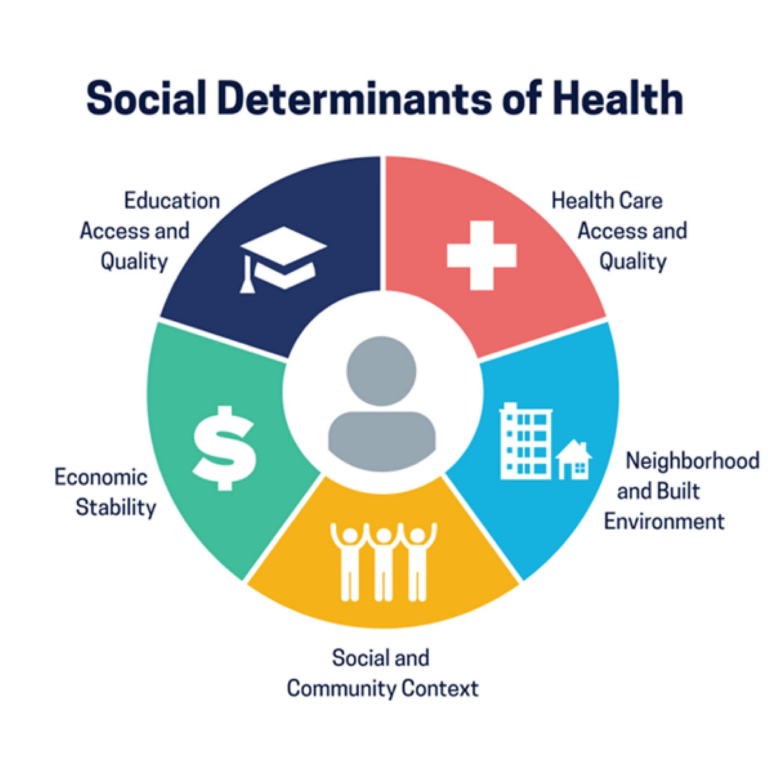Healthcare access has long been a prevalent issue in the United States. From inadequate coverage to the many barriers to accessing health care, there are many concerns that the average citizen faces. Currently, 1 in 10 Americans don’t have health insurance. Inadequate health care access is an issue that impacts a large proportion of our population, specifically those who suffer from substance use disorder (SUD). Analyzing how low access to health care relates to substance use disorder and recovery outcomes is critical to understanding how to positively influence these outcomes. The social determinants of health (SDoH) can help us to understand more intimately how social factors, such as healthcare access and quality, contribute to an individual’s overall health and recovery outcomes. Keep reading to learn a bit more about what health care access and quality looks like, and how you can incorporate important insights into your practice as a recovery professional.
What is Health Care Access and Quality?
Health Care access and quality refers to the degree to which an individual has access to effective, equitable and affordable health care services. Taking into account physical ability to access services as well as the financial means to afford services – the term access encompasses the likelihood that someone will get the care they need. Determined on a more individual level, quality can be defined as the effectiveness and suitability of care.
Think of it like this: when discussing access, was the patient able to get to the care they needed, and without experiencing a large financial burden as a result? And in terms of quality, did they receive the care they needed, with the desired health care outcome intended?
Many people in the U.S. do not receive adequate health care, whether they are unable to find transportation to appointments, or do not have coverage that allows a primary care provider to prescribe and offer adequate health care referrals and medical interventions. This leaves around 43% of working adults with inadequate health care coverage, in 2022 alone.
This affects millions nationally, and uniquely those suffering from SUD.
Why is This Important?
As we sit today, it is understood that individuals suffering from SUD are continuously facing barriers to health care services. Recent studies have shown that financial burdens of care, logistical difficulties in accessing care, and low social support were common challenges among individuals using illicit drugs and/or drinking hazardously. Aside from this already massive gap, there is another massive health care gap we can observe – the treatment gap.
There is currently a deficit of treatment and recovery services available to those suffering from SUD. The treatment gap coupled with inadequate health care access rates depicts just how large a barrier health care services can be for those suffering from SUD. Raising awareness around this prevailing issue is only the first step. As professionals within the recovery industry, it’s absolutely essential that we not only understand the SDoH, but incorporate them into our everyday practices with clients. Keep reading to learn more about how you can begin to incorporate the SDoH in client services.
Supporting Access to Adequate Health Care With Clients
As you broach this subject with clients, keep in mind that each individual has a unique experience with health care access. Maybe you have one client who previously had full health care coverage with their employment package before losing their job in the wake of addiction. Some clients may have never had adequate health care access, nor has their family. The SDoH should all be considered in conjunction with one another to get the full picture.
Using the SDoH as a framework, work with your client to uncover their experiences with healthcare throughout their lifetime, and how this may have impacted their health outcomes. Some questions you might consider:
- Did your client previously have adequate health care access?
- Has your client ever had a primary care provider?
- Is your client still met with barriers to accessing health care?
- Does your client qualify for state or federal programs that may assist with health care access?
- Does your client wish to be accompanied to health care appointments?
Assess the circumstances fully, and let this serve as a guiding light while you find specific resources that can effectively support your client in achieving access to healthcare tools. Remember, your Client might not have experience with these systems and processes, so assist them in learning how to navigate this new territory.
Put it Into Practice!
Adequate health care access and quality is critical to the success of clients in recovery. Using the SDoH, you can serve as a guide for clients as they navigate the healthcare system. Critical to offering tailored care, you should have a firm understanding of your clients’ history within the social systems in our society. A significant part of offering effective and individualized care, means maintaining a high standard of care. The SDoH can assist you in this. To learn more about the SDoH, check out the rest of our blog series or visit the Kyros Peer Resource hub below!
Learn More About Continuing Education
The Kyros Peer Resource Hub was largely created by Peers, for Peers. Find other education-related resources and more here to assist you in providing tailored support to your clients.
Sources:
BMC Public Health. “Perceived access and barriers to care among illicit drug users and hazardous drinkers: findings from the Seek, Test, Treat, and Retain data harmonization initiative (STTR).” BMC Public Health, 2018. https://bmcpublichealth.biomedcentral.com/articles/10.1186/s12889-018-5291-2.
Accessed 4 August 2023.
The Commonwealth Fund. “The State of U.S. Health Insurance in 2022.” The Commonwealth Fund, September 2022. https://www.commonwealthfund.org/publications/issue-briefs/2022/sep/state-us-health-insurance-2022-biennial-survey#:~:text=Forty%2Dthree%20percent%20of%20working,to%20health%20care%20(23%25).
Accessed 4 August 2023.
U.S. Department of Health and Human Services. “Social Determinants of Health – Health Care Access and Quality.” Healthy People 2030, 2023. https://health.gov/healthypeople/priority-areas/social-determinants-health.
Accessed 3 August 2023.





